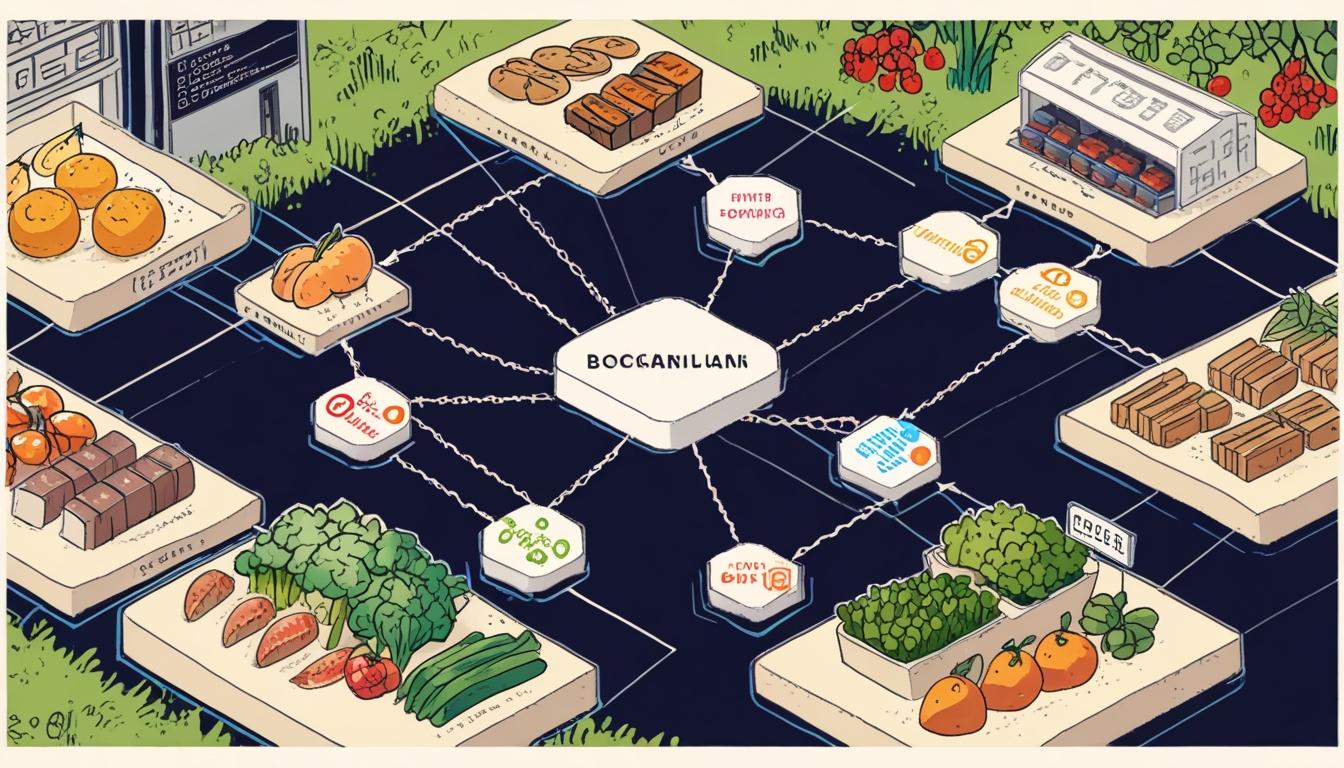Web3 is shifting power toward decentralisation, enhancing transparency and efficiency across various industries, from supply chains to insurance.
Blockchain technology has rapidly evolved beyond its initial association with cryptocurrency and is now central to what many refer to as the next digital revolution. According to Techiexpert.com, the applications of Web3 are transforming various industries by fostering transparency, decentralization, and automation. This technological advancement is affecting both businesses and consumers in a multitude of ways.
One significant area where Web3 is making a notable impact is supply chain management. Traditional supply chains face inefficiencies, threats of fraud, and a lack of transparency. Blockchain technology addresses these issues by providing a decentralised ledger that records every step of the supply chain process immutably. This capability enables real-time tracking of products. Leading companies, including Carrefour, have adopted blockchain to trace their food products. This initiative allows consumers to access verified data about the sourcing and production of their food, ensuring ethical sourcing and reducing the prevalence of counterfeit goods.
In addition to supply chain enhancements, Web3 is empowering individuals through decentralised digital identities. Data breaches and identity theft have become common issues in the digital landscape, which has prompted a growing trend towards decentralised identity verification. Systems such as China’s Real-Name Decentralized Identifier System (RealDID) and Microsoft’s Identity Overlay Network (ION) utilise blockchain technology to provide users with secure, self-sovereign identities. This innovation allows individuals to authenticate themselves online without relying on centralised entities, thereby minimising risks associated with storing sensitive personal data on vulnerable servers.
Furthermore, Web3 is decentralising the internet itself, a movement that shifts power away from centralised tech giants and towards individual users. Platforms like Lens Protocol facilitate decentralised social networking where users maintain ownership of their own content. Artists and musicians, too, are harnessing NFT marketplaces to sell their work directly and bypass intermediaries. This fundamental shift is representative of a new digital economy driven by the capabilities of Web3.
Another transformative aspect of Web3 is the introduction of smart contracts. These self-executing agreements automatically enforce terms when predefined conditions are met, thereby addressing the inefficiencies that often plague legal agreements and financial transactions. For instance, platforms such as Propy enable buyers and sellers in the real estate market to conduct transactions via blockchain, significantly reducing fraud risk and paperwork. A practical example includes the rental industry, where a blockchain-based smart contract can facilitate instant verification and unlocking of rental agreements, streamlining the entire process.
The insurance sector is also experiencing significant changes due to the automation and transparency offered by Web3 applications. Traditional insurance claim processes can be slow, bureaucratic, and subject to disputes. With the help of blockchain-based smart contracts, claims processing can be automated, ensuring that policyholders receive immediate payouts once certain conditions are met. Etherisc, for instance, offers flight insurance that automatically compensates travellers for delays without requiring them to file a claim. Similarly, farmers using blockchain for crop insurance can receive instant payouts in adverse weather conditions. The incorporation of blockchain in insurance enhances both trust and efficiency.
The demand for greater transparency from consumers is leading companies to adopt Web3 applications to verify ethical sourcing and combat counterfeiting. Notable fashion brands such as LVMH and H&M are utilising blockchain to authenticate sustainability claims, ensuring compliance with fair labour practices and ethical material sourcing. The food industry similarly relies on blockchain to trace ingredients back to their origins, aligning with a growing trend of ethical consumerism.
Looking ahead, the prevalence of Web3 applications is expected to increase as blockchain adoption continues to expand. Various stakeholders are encouraged to invest in education related to this technological shift, foster collaboration among industry players, support regulatory frameworks, and promote accessibility.
Overall, the applications of Web3 are poised to redefine work, transactions, and digital interactions, illustrating the potential for blockchain to create a more efficient and trustworthy environment in the digital age.
Source: Noah Wire Services
- https://crowleymediagroup.com/resources/industries-that-benefit-most-from-web-3/ – This URL supports the claim that Web3 technologies are transforming various industries by providing a secure, distributed, and decentralized platform for data storage and transactions. It highlights sectors like finance, supply chain, and retail that benefit from Web3.
- https://www.mckinsey.com/featured-insights/mckinsey-explainers/what-is-web3 – This URL explains how Web3 differs from Web2 by focusing on decentralized control, trust, and how transactions are managed. It also discusses real-world applications of Web3, including its use in providing secure, transparent financial services.
- https://digitalassetsus.wbresearch.com/blog/the-opportunities-of-web3-and-blockchain-in-industries-beyond-finance – This URL explores the opportunities of Web3 and blockchain in industries beyond finance, including healthcare, education, logistics, and manufacturing. It discusses the role of smart contracts and DAOs in these sectors.
- https://builtin.com/blockchain/blockchain-applications – This URL outlines real-world blockchain applications across multiple sectors, including healthcare, IoT, and NFT marketplaces, demonstrating the wide impact of blockchain technology beyond cryptocurrency.
- https://www.nadcab.com/blog/top-10-use-cases-web3-development – This URL provides insights into various use cases of Web3, including decentralized finance (DeFi), supply chain management, and healthcare. It highlights the benefits of Web3 in these industries, such as enhanced transparency and security.
Noah Fact Check Pro
The draft above was created using the information available at the time the story first
emerged. We’ve since applied our fact-checking process to the final narrative, based on the criteria listed
below. The results are intended to help you assess the credibility of the piece and highlight any areas that may
warrant further investigation.
Freshness check
Score:
4
Notes:
The narrative mentions current trends in blockchain technology and Web3 applications without specific references to outdated information. However, it does not include recent or unique developments, suggesting it may be based on general knowledge rather than new research or announcements.
Quotes check
Score:
0
Notes:
There are no direct quotes in the provided text for verification.
Source reliability
Score:
5
Notes:
The narrative originates from a Google News feed and references Techiexpert.com, which is not as widely recognized or established as major news outlets like BBC or Reuters. The reliability is moderate due to this mix of sources.
Plausability check
Score:
8
Notes:
The claims regarding the impact of blockchain and Web3 on supply chain management, digital identities, and smart contracts align with current trends and are plausible. The lack of specific evidence or new developments slightly reduces the score.
Overall assessment
Verdict (FAIL, OPEN, PASS): OPEN
Confidence (LOW, MEDIUM, HIGH): MEDIUM
Summary:
The narrative discusses current trends in blockchain technology without specific references or recent breakthroughs, which affects its freshness. While it lacks direct quotes and references from highly established sources, it presents plausible claims about Web3 applications. Overall, it neither strongly passes nor fails fact-checking, mainly due to the lack of precise information or updates.













